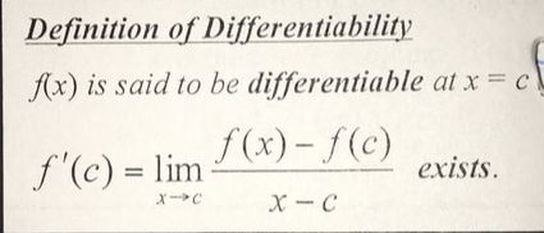

That is, there are no jumps, holes, or vertical asymptotes in the graph. Intuitively, we say a function is continuous if we can draw its graph without lifting the pencil.

Now that we’ve discussed limits, we can talk about continuity. Further Resources for limitsĬheck out this Magoosh article or this video for more practice and explanation about limits. Either case leads to a horizontal asymptote, which you may read more about in this article. The other way that infinity may play a role is that you might have a limit in which x → ∞ or x → -∞. Read here for more information about vertical asymptotes. In either case, the function has a vertical asymptote at that point. Conversely, if the values drop without bound (getting bigger in the negative sense), then the value of the limit is -∞. If the values of f( x) seem to get bigger and bigger without bound as x approaches a number, then we say the value of the limit is ∞. Sometimes the limit expression involves infinity (∞ or -∞). It has the form 0/0, so we can use L’Hospital’s Rule. If both criteria are met, then L’Hospital’s Rule states that the limit of a fractional expression is the same as the limit after taking derivatives of the numerator and denominator. Secondly - and this is crucial! - when you plug in the given x-value, the fraction must either evaluate to 0/0 or ∞/∞. If it isn’t a fraction, there still may be ways to use L’Hospital as long as you can convert the given expression into a fractional form. In order to use L’Hospital’s Rule, you must first check to see that your limit has the right form.įirst of all, it must be a fraction of two functions, p( x) / q( x). In other words, the conjugate of ( a + √ b) is equal to ( a – √ b).Īfter you learn about derivatives in calculus, then you can use one of the most powerful tools for finding limits, L’Hospital’s Rule (L’Hospital, or L’Hôpital, is a French name, pronounced Low-pee-tal. The conjugate of a radical expression is found by changing the sign in front of the radical. To rationalize an expression, multiply both the numerator and denominator by the conjugate. The reason for this is that rationalization often changes the form in just the right way so that the limit problem can be solved.

Sometimes the radical is in the numerator, and we rationalize the expression anyway. In algebra, rationalizing means changing the form of a number to avoid radicals in the denominator. Multiplying the LCD to both the top and bottom allows you to simplify the expression. Find the denominators of the small fractions, x and 3 in this case. In my experience, the easiest way to do this is by finding the least common denominator (LCD). Once the common factor is canceled, then you can plug in the x value to find the limit.īecause problem 2 has fractions on top of fractions, we look for ways to simplify or “get rid” of some of the fractions. If the numerator and denominator are both polynomials, then try factoring first. Problem 1 is a typical case in which factoring helps out. Let’s see how these techniques might be used in the following examples. Usually, you have to simplify the expression in some way and then plug in the x-value. When graphs are not given, it can be tricky to find limits. For example, in the graph below, the limit exists at x = 3 even though the function has a hole in the graph at that point. It’s important to realize that the limit value does not depend on the actual value of f( a). This notation means: “The y-value of f( x) approaches L as x approaches a. We use the following notations for a limit: What is a limit anyway? In simple terms, a limit for a function is a particular y-value that the function approaches as x is allowed to approach a specified value. Much more can be said about limits and continuity in general. Keep in mind this is just a short review.
LIMITS IN CALCULUS BC HOW TO
We’ll also see the “three-part” definition for continuity and how to use it. In this article, we’ll discuss a few different techniques for finding limits. Limits and continuity are topics that show up frequently on both the AP Calculus AB and BC exams.


 0 kommentar(er)
0 kommentar(er)
